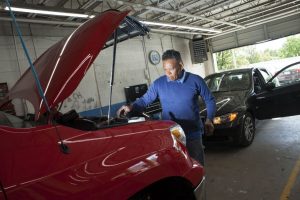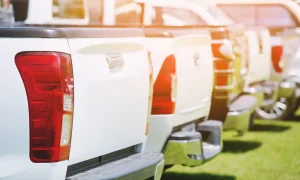Car hauling is a process of transporting one or more vehicles from one location to another. Whether you are a car dealer, a manufacturer, or an individual moving a car across the country, car hauling can be a challenging task. There are many things to consider when transporting a vehicle, from choosing the right trailer to preparing your vehicle for transport. In this ultimate guide to car hauling, we’ll cover all the tips, tricks, and everything you need to know to make your car hauling experience a success.
Types of Car Hauling Trailers
The first thing you need to consider when hauling a car is the type of trailer you need. There are three main types of car hauling trailers: open trailers, enclosed trailers, and flatbed trailers.
Open trailers are the most common type of car hauling trailer. They are often used for transporting multiple vehicles at once and are the most cost-effective option. However, they don’t provide any protection from the elements, which means your vehicle will be exposed to weather conditions such as rain, wind, and dust.
Enclosed trailers, on the other hand, provide full protection from the elements. They are often used for transporting high-value vehicles or for long-distance transport. However, they are more expensive than open trailers and can be more difficult to maneuver.
Flatbed trailers are often used for transporting oversized vehicles or heavy equipment. They provide easy access to the vehicle from all sides, making them a good choice for vehicles that are not running or that have low clearance. However, they are not suitable for transporting multiple vehicles at once and can be more expensive than open trailers.
Preparing Your Vehicle for Transport
Once you’ve chosen the right Car haulers for your car hauling needs, it’s time to prepare your vehicle for transport. Here are some tips to help you get your vehicle ready for transport:
Clean your vehicle thoroughly: Before your vehicle is loaded onto the trailer, it’s important to clean it thoroughly. This will allow you to inspect your vehicle for any existing damage and make note of it before transport.
Remove all personal belongings: You should remove all personal belongings from your vehicle before transport. This includes any loose items in the trunk, glove compartment, or other areas of the car.
Disable alarms and GPS systems: You should disable any alarms or GPS systems in your vehicle before transport. This will prevent any accidental activation during transport.
Check for leaks: Before your vehicle is loaded onto the trailer, check for any leaks from the engine, transmission, or other areas of the car. If you find any leaks, have them repaired before transport.
Secure loose parts: If your vehicle has any loose parts such as spoilers, mirrors, or antennas, make sure they are secured before transport. This will prevent them from getting damaged during transport.
Choosing a Car Hauling Company
Choosing the right car hauling company is just as important as choosing the right trailer and preparing your vehicle for transport. Here are some tips to help you choose the right car hauling company:
Do your research: Before choosing a car hauling company, do your research. Look for reviews online and ask for recommendations from friends or family members who have used car hauling services in the past.
Check for insurance: Make sure the car hauling company you choose has adequate insurance coverage. This will protect your vehicle in case of any damage during transport.
Ask about their experience: Ask the car hauling company about their experience and how long they have been in business. This will give you an idea of their level of expertise and reliability.
Get a written contract: Before hiring a car hauling company, make sure you get a written contract that outlines the terms and conditions of the transport. This will protect you in case of any disputes or misunderstandings.






More Stories
The Role of Fuses in Car Power Lock Systems
Winter-Proof Your Classic Car: Sunroof Care Essentials
Professional Oil Change Repair Solutions for Cars